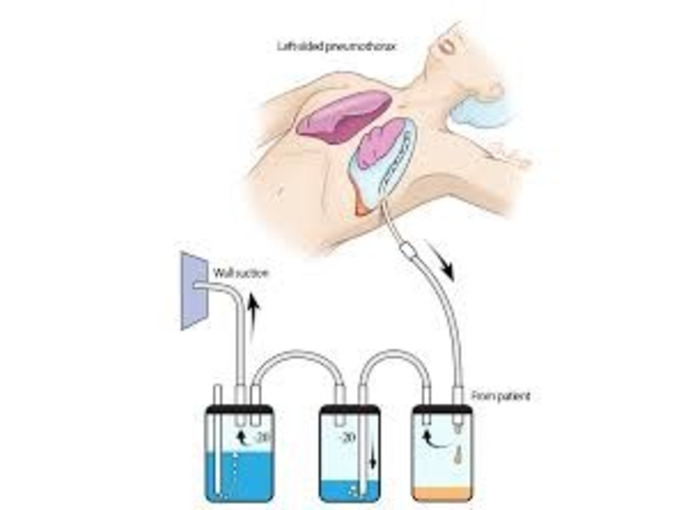Requirement
- Vital signs tray
- Tray for serving oral medication
- Dressing trolley if necessary
- Sterile gloves
Component Task
1. Reassure patient and puts patient in the fowlers or semi fowlers position
2. Checks vital signs and records( baseline data)
3. Washes hands and puts on gloves
4. Place the bottle below he chest level in a receptacle
5. Checks the rate and depth of respiration, chest movement and auscultates his lungs
6. Observes dressing site for bleeding and dislodgement of tube and inspect air vent in the system
7. Checks fluid level fluctuation and bubbling in the drainage system
8. Checks tube for kinking an perforations
9. Encourage patient to cough frequently an breathe deeply
10. Assess patency of drainage system
11. Tell patient to report any breathing difficulty immediately
12. Checks and changes the chest tube dressing when necessary and palpates the area surrounding the dressing for crepitus.
13. Observe the volume colour and consistency and odour of the drainage
14. Washes hands and administers pain medication
15. Assist patient with range of motion (R.O.M) exercises
16. Thanks patient for cooperation
17. Washes hands again and documents procedure.







0 Comments